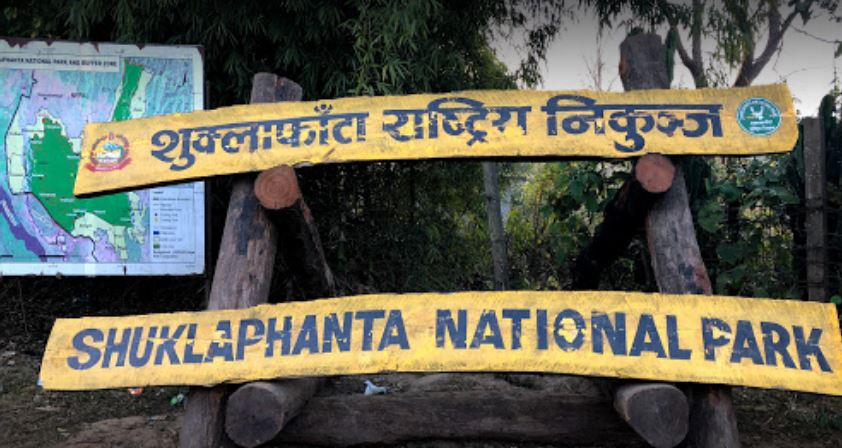Physical Address
304 North Cardinal St.
Dorchester Center, MA 02124
Physical Address
304 North Cardinal St.
Dorchester Center, MA 02124

Shuklaphanta National Park, located in the far western region of Nepal, is one of the country’s most diverse and significant protected areas. Spanning 305 square kilometers, the park is renowned for its vast grasslands, known as phantas, and rich wildlife, including some of the world’s largest herds of swamp deer (barasingha). It is named after the Shuklaphanta grasslands, the largest in the park, and is home to a variety of ecosystems ranging from dense sal forests to riverine wetlands. Established as a wildlife reserve in 1976 and upgraded to a national park in 2017, Shuklaphanta National Park is a vital haven for both flora and fauna, making it a must-visit destination for wildlife enthusiasts and nature lovers.
Shuklaphanta National Park lies in the lowland Terai region of Nepal, with its headquarters in the town of Majhgaon. The park’s terrain is characterized by expansive grasslands, dense forests, and wetland areas. The Bahuni River and the Mahakali River are the major water sources that sustain the park’s diverse ecosystems.
The park experiences a tropical monsoon climate, with hot summers, a wet monsoon season, and mild winters. The best time to visit is during the winter months from October to March, when the weather is pleasant, and wildlife is more easily observe.
Shuklaphanta National Park is known for its diverse plant life, with various forest types, grasslands, and wetlands providing habitats for numerous species.
The park is a sanctuary for a variety of wildlife, including several endangered species. It is especially famous for its large population of swamp deer.
Shuklaphanta National Park is home to 46 species of mammals, including:
Shuklaphanta National Park is a birdwatcher’s paradise, with over 450 species of birds recorded:
The park is also home to a variety of reptiles and amphibians, including:
Shuklaphanta National Park plays a crucial role in the conservation of endangered species and their habitats. The park is managed by the Department of National Parks and Wildlife Conservation (DNPWC) with the support of local communities.
The conservation of swamp deer is one of the park’s most significant achievements. Efforts to protect and expand their habitat have resulted in a steady increase in their population, making the park a critical stronghold for this species.
The park is part of the Terai Arc Landscape, which is crucial for tiger conservation in Nepal. Continuous monitoring through camera traps and anti-poaching patrols have helped protect the park’s tiger population.
Local communities play an essential role in the park’s conservation efforts. Programs focused on sustainable livelihood options, such as eco-tourism and handicrafts, have been implemented to reduce dependency on forest resources and mitigate human-wildlife conflict.
Shuklaphanta National Park offers a unique and tranquil wildlife experience, far from the crowds found in more popular parks. Activities include:
While the park’s tourism infrastructure is still developing, there are a few lodges and guesthouses near the park that offer comfortable stays. Additionally, homestays with local families provide an authentic cultural experience.
Shuklaphanta National Park is accessible from Kathmandu by both air and road. The nearest airport is Dhangadhi Airport, which is about a two-hour drive from the park’s entrance. There are regular flights from Kathmandu to Dhangadhi. For those traveling by road, the park is well-connect via the East-West Highway, making it reachable by bus or private vehicle.
Winter and early spring months (October to March): During this period, the weather is pleasant, and wildlife is more easily observed in the grasslands and forests. The summer months can be hot and humid.
the monsoon season (June to September) brings heavy rains that may make some areas inaccessible.
Shuklaphanta National Park is one of Nepal’s most remarkable natural treasures, offering an unparalleled experience of the country’s rich biodiversity. From the vast herds of swamp deer to the elusive tigers and vibrant birdlife, the park is a sanctuary for wildlife and a testament to successful conservation efforts. Its secluded location and pristine environment make it an ideal destination for those seeking a peaceful and authentic wildlife experience in Nepal’s Terai region. As a lesser-known yet incredibly significant national park, Shuklaphanta is a must-visit for anyone passionate about nature and conservation.